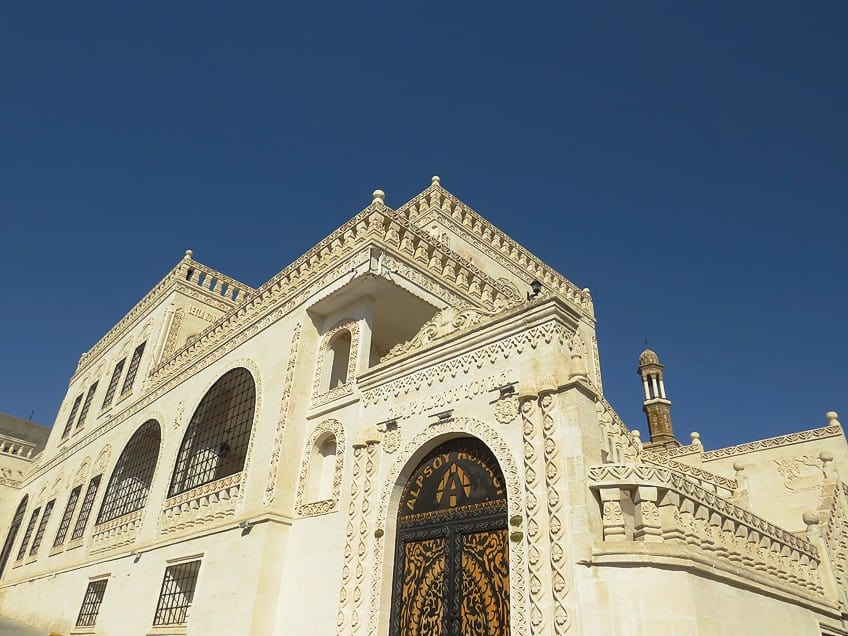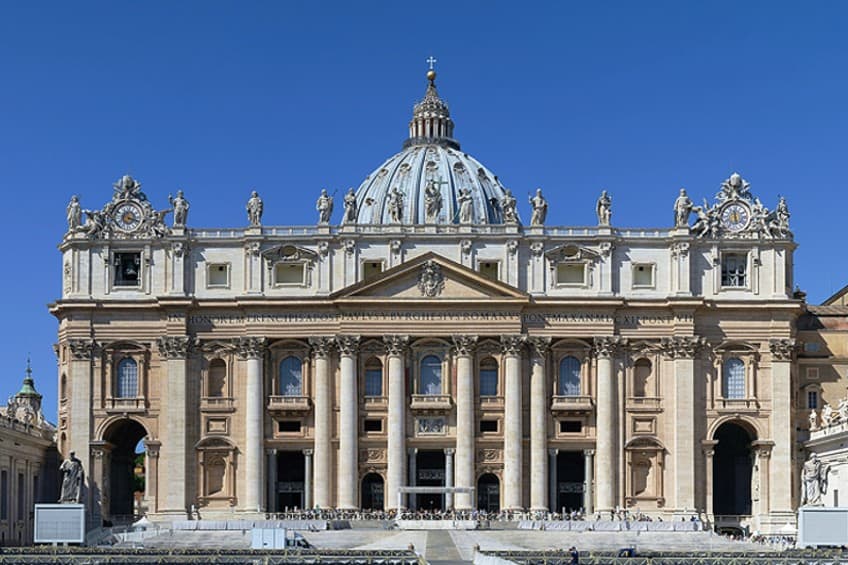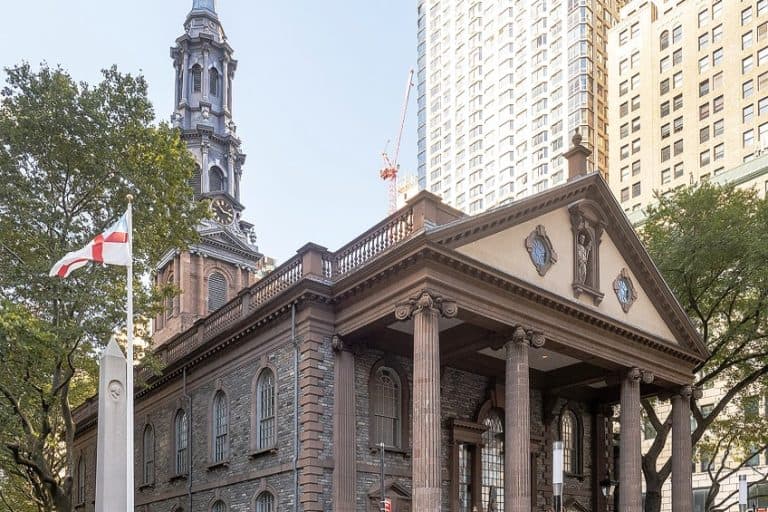Oldest Churches in the World – Ancient Churches Across the Globe
Where was the first Christian church located and what are the oldest churches in the world? Ancient churches can be found across the world, wherever religion took root – which was a substantial amount of places! Old church buildings communicate vital information regarding the culture and technology of the civilization and era in which they were constructed. Let’s take a look at the oldest Christian churches and cathedrals around the world.
Discovering the Oldest Churches in the World
Examining ancient churches can teach us much about the architectural abilities and religious practices of earlier generations. Some of the oldest Christian churches have been able to survive the ravages of war, natural disasters, and centuries of neglect while other old church buildings have simply become ruins over time. Which were the oldest Catholic churches and what was the oldest cathedral?
Let us learn the answer together by exploring our list of the oldest churches in the world.
Mor Gabriel Monastery (Mardin, Turkey): 397 CE
| Architect | Unknown |
| Date Completed | 397 CE |
| Height (meters) | 10 |
| Function | Syriac Orthodox monastery |
| Location | Mardin, Turkey |

The monks Mor Shmu’el and Mor Shem’un established Dayro d-Mor Gabriel in 397 CE. Tradition holds that Shem’un had a dream in which an Angel gave him the instruction to construct a House of Worship where three massive stone blocks had formerly stood. Shem’un noticed the stone the angel had put when he awakened, and he went there with his instructor. Mor Gabriel Monastery was subsequently constructed here. The monastery increased in significance, and by the sixth century, there were over 1,000 Coptic monks living there. The monastery became so well-known that contributions were donated by Roman Emperors such as Honorius, Arcadius, Theodosius II, and Anastasius. It serves as the seat of the bishop of Turabdin and is still home to a few faithful priests today.
Monastery of Saint Anthony (Ras Gharib, Egypt): 356 CE
| Architect | Unknown |
| Date Completed | 356 CE |
| Height (meters) | Unspecified |
| Function | Coptic Orthodox monastery |
| Location | Ras Gharib, Egypt |

The Saint Anthony Monastery dates from the 4th century. It began as an assembly of the first Christian monk’s disciples in a tiny cave at the bottom of a mountain in Egypt’s Eastern Desert. Inside defensive walls, the complex gradually grew to include five churches, a library, a bakery, and a garden oasis. Currently, it is home to approximately 100 monks who have embraced a desert life of prayer and meditation. They live in chambers within the complex and continue to maintain the traditions established by Saint Anthony’s initial disciples many thousands of years ago. Some of the complex’s historic churches have been rebuilt. The Monastery of St Anthony is the oldest structure and the major reason for exploring this isolated region of the world. It was built above the saint’s grave and has a collection of ancient medieval Coptic wall paintings.
Tourists can accompany hundreds of pilgrims on a daily tour of the monastery’s defensive walls escorted by resident monks.
Santa Maria (Trastevere, Rome): 340 CE
| Architect | Carlo Fontana (1634 – 1714) (later work) |
| Date Completed | 340 CE |
| Height (meters) | 75 |
| Function | Basilica |
| Location | Trastevere, Rome |

Santa Maria in Trastevere dates from 340 CE and is one of the city’s first churches devoted to the Virgin Mary. The church has undergone several reconstructions, yet it still retains its early medieval style. While the church’s earliest portions date back to the third century, new elements were constructed in the 12th century. The bell tower with its Romanesque design, a collection of internal mosaic works, and a stunning gilded façade are among them and the portico was constructed in the 18th century. There are several fascinating features that draw pilgrims and historians from all over the planet to this Roman cathedral. The 12th-century mosaics are undeniably a highlight – a sequence of six exquisite mosaics portraying the life of the Virgin Mary by Cavallini.
Cathedral of Trier (Trier, Germany): 340 CE
| Architect | Johann Georg Judas (1655 – 1726) (later reconstructive work) |
| Date Completed | 340 CE |
| Height (meters) | Unspecified |
| Function | Cathedral |
| Location | Trier, Germany |

The Roman Catholic Cathedral of Trier, which was constructed in the fourth century, has been modified over thousands of years. It is still the oldest bishop’s church in Germany and Trier’s greatest ecclesiastical structure. One of the first Early Christian chambers north of the Alps may still be found beneath the cathedral, which is located atop a former palace that was subsequently turned into an old Christian church. The precious ‘Holy Robe’ discovered here, thought to include parts of Christ’s garment, is the Cathedral’s greatest treasure. It was uncovered many centuries later when the high altar was opened, and it was first referenced by religious experts in the 12th century. This old Christian relic is kept in an annex and is only unveiled on rare occasions.
Besides the excellent Gothic and Roman architecture, another significant relic is the Holy Nail, which is said to have come from the Crucifixion.
Church of the Nativity (Bethlehem, West Bank): 339 CE
| Architect | Flavia Julia Helena Augusta (248 – 330 CE) |
| Date Completed | 339 CE |
| Height (meters) | Unspecified |
| Function | Church |
| Location | Bethlehem, West Bank |

The Church of the Nativity in Bethlehem is commonly regarded as Christ’s birthplace. The Church of the Nativity is one of the holiest places for Christians on Earth and one of the oldest Christian churches still in use. It is located at the end of a famous pilgrimage route and is visited by hundreds of thousands every year. The new church, built at the entrance of an old cave to substitute an earlier church demolished during a 6th-century uprising, retains the original white-and-red floor mosaics and limestone columns. The church still allows access to the lantern-lit Grotto of the Nativity through a low entrance called the Door of Humility (which had been resized to prevent looters from entering on horseback). The Chapel of the Manger commemorates the location where Christ is claimed to have been born.
Church of the Holy Sepulchre (Jerusalem, Israel): 335 CE
| Architect | Nikolaos Ch. Komnenos (1770 – 1821) (later restoration) |
| Date Completed | 335 CE |
| Height (meters) | 34 |
| Function | Church |
| Location | Jerusalem, Israel |

The Church of the Holy Sepulchre in Jerusalem, made of wood and stone, is characterized by a series of stunning arches studded with Crusader symbols. Consecrated in 335 CE, it is constructed upon two of Christianity’s most renowned sites: the Tomb of the Sepulchre, and the biblical Rock of Calvary, where Christ was crucified. It is one of the most visited pilgrimage destinations on the planet, with millions of visitors each year. The Rock of Calvary is kept there on the main Greek Orthodox altar. The rock can be viewed through the glass on either side of the altar, and beneath the altar is a gap thought to be where the cross was lifted.
Because of its importance, it is the most frequented location in the Church of the Holy Sepulchre.
St. Peter’s Basilica (Vatican City, Italy): 333 CE
| Architect | Michelangelo (1475 – 1564) (later work) |
| Date Completed | 333 CE |
| Height (meters) | 137 |
| Function | Basilica |
| Location | Vatican City, Italy |

St. Peter’s Basilica in Vatican City is by far the most spectacular of the oldest Catholic Churches. It is situated within the Vatican City famed for its cathedrals and religious architecture. It’s among the oldest – as well as largest – basilicas in Rome, dating back to 333 CE and renovated in the 16th century. It’s claimed to have been erected atop St. Peter’s tomb. The central balcony, where the Pope addresses the congregation on special occasions, as well as the spectacular façade with 13 sculptures, including Christ the Redeemer and St. John the Baptist, are among the basilica’s highlights. Inside the massive church’s walls are some outstanding works of art, most famously Michelangelo’s captivating Pieta sculpture, which depicts the Madonna lamenting the death of the son she carries in her lap and is worth hundreds of millions of dollars. Visitors to the basilica are allowed to ascend to the roof for spectacular views of the Vatican and its surroundings.
Stavrovouni Monastery (Stavrovouni, Cypress): 327 CE
| Architect | Unknown |
| Date Completed | 327 CE |
| Height (meters) | Unspecified (750 above sea level) |
| Function | Monastery |
| Location | Stavrovouni, Cypress |

The monastery was built by Byzantine Emperor Constantine I, the Great and Saint. Helena, based on religious tradition. According to the 15th-century Cyprus writer Leontios Makhairas, Helena traveled on a pilgrimage to the Holy Land following the First Ecumenical Council in Nicaea, where she found the three crosses on which Christ and the two sinners had been nailed. She unearthed them and prepared to transfer them to Constantinople, but she is believed to have abandoned one in Cyprus during an unscheduled stop due to a shipwreck. According to religious belief, the Holy Cross was miraculously transported to the summit of a high hill overnight, and a bright light emanated from that point.
Helena chose to keep a section of the Holy Cross on the mountain after repeated failed attempts to move it and also constructed a little church to commemorate the location.
Panagia Ekatontapiliani (Paros, Greece): 326 CE
| Architect | Saint Constantine (306 – 337 CE) |
| Date Completed | 326 CE |
| Height (meters) | Unspecified |
| Function | Church |
| Location | Paros, Greece |

During her voyage to the Holy Land in pursuit of the Holy Cross, a storm stranded Saint Helene on the Greek island of Paros, where she vowed to the Virgin that she would construct a church if her mission was successful. After her passing, Constantine, her son, erected this cathedral, which was consecrated to the Assumption of the Virgin. The Byzantine Emperor Justinian renovated the cathedral and erected a dome in the sixth century CE. Further reformations were carried out over the centuries, and the church today is a combination of Byzantine, Paleochristian, and post-Byzantine characteristics. According to legend, the building has 99 doors, and when the Hagia Sofia in Istanbul becomes Orthodox again, a hidden door will open. It also features a baptistery and monks’ quarters in the monastery’s yard.
Etchmiadzin Cathedral (Vagharshapat, Armenia): 301 CE
| Architect | Saint Gregory the Illuminator (239 – 330 CE) |
| Date Completed | 301 CE |
| Height (meters) | 34 |
| Function | Cathedral |
| Location | Vagharshapat, Armenia |

The Etchmiadzin Cathedral, which was consecrated in 301 CE, is the Vatican of the Armenian Apostolic Church and is claimed to be the world’s oldest cathedral. The first church was erected over a pagan temple during the reign of King Tiridates III when Christianity had become the national religion, but it gradually fell into ruin. It has been restored multiple times throughout the ages, reflecting a diverse range of Armenian architectural styles. Nowadays, the great cathedral is nestled amid trimmed bushes and lawns, flanked by more elegant 19th-century structures. The cathedral itself consists of a central cupola embellished with spectacular, sparkling paintings and a Treasury housing a number of holy relics like the Holy Lance and a part of Noah’s ark.
That concludes our look at the oldest Catholic and Christian churches from other denominations. Many of the oldest churches in the world still exist today because they were renovated and reconstructed over time. This was to maintain the state of the structures that often contained holy relics, so that pilgrims and believers can still have access to the beautiful and ancient churches today. Without the work of patrons, the church, and kings, these glorious old church buildings would have crumbled centuries ago.
Frequently Asked Questions
Where Was the First Christian Church Located?
The first Christian church’s specific location is unknown, but it is thought to have been in or near the upper chamber where the disciples assembled for the Last Supper. Nowadays, several sites in Jerusalem are considered essential to the early Christian church, including the Church of the Holy Sepulchre, which is thought to be the site of Jesus’ crucifixion and burial, and the Cenacle, which is thought to be the place of the Last Supper and the Holy Spirit’s descent on Pentecost.
What Is the Oldest Cathedral on Earth?
The Etchmiadzin Cathedral is thought to be the oldest cathedral on earth. It was built around 301 CE, and it was built on the site of another temple that was originally used for Pagan ceremonies.
Justin van Huyssteen is a freelance writer, novelist, and academic originally from Cape Town, South Africa. At present, he has a bachelor’s degree in English and literary theory and an honor’s degree in literary theory. He is currently working towards his master’s degree in literary theory with a focus on animal studies, critical theory, and semiotics within literature. As a novelist and freelancer, he often writes under the pen name L.C. Lupus.
Justin’s preferred literary movements include modern and postmodern literature with literary fiction and genre fiction like sci-fi, post-apocalyptic, and horror being of particular interest. His academia extends to his interest in prose and narratology. He enjoys analyzing a variety of mediums through a literary lens, such as graphic novels, film, and video games.
Justin is working for artincontext.org as an author and content writer since 2022. He is responsible for all blog posts about architecture, literature and poetry.
Learn more about Justin van Huyssteen and the Art in Context Team.
Cite this Article
Justin, van Huyssteen, “Oldest Churches in the World – Ancient Churches Across the Globe.” Art in Context. July 14, 2023. URL: https://artincontext.org/oldest-churches-in-the-world/
van Huyssteen, J. (2023, 14 July). Oldest Churches in the World – Ancient Churches Across the Globe. Art in Context. https://artincontext.org/oldest-churches-in-the-world/
van Huyssteen, Justin. “Oldest Churches in the World – Ancient Churches Across the Globe.” Art in Context, July 14, 2023. https://artincontext.org/oldest-churches-in-the-world/.









